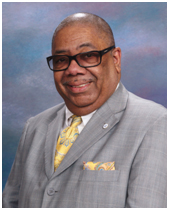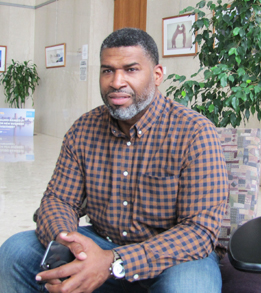
By Rev. Donald L. Perryman, Ph.D.
The Truth Contributor
How poor they are that have not patience! What wound did ever heal, but by degrees?
– William Shakespeare
Last week’s Blade editorial chided Mayor Wade Kapszukiewicz for “silencing” JoJuan Armour, the city’s Gun Violence program manager. Unfortunately, The Blade’s assertion is based on the faulty premise that because Armour hadn’t spoken with the powerful media entity, he was prohibited from speaking without a “filter” to anyone or speaking at all.
On the contrary, Armour has been meeting regularly with the affected groups, garnering community involvement to educate and develop solutions from those most directly impacted by the problem of gun violence.
Another misguided assumption is that violence reduction can occur quickly. However, there is no such thing as “overnight success” when addressing the broad social, cultural, and political factors shaping and reflecting gun violence. For example, the U.S. is one of the few more economically developed countries that loosens rather than strengthens access to guns. Additionally, a culture of violence in America has helped reinforce toxic masculinity as an acceptable way of life for many. Finally, the influence of the powerful gun lobby has made firearm control a nearly legislative impossibility.
Armour’s patience may give him a bum rap. Yet, he continues to actively put in the work as he “plays the long game” required to bring change to the community he loves and cherishes.
I spoke with Armour, “unfiltered,” to set the record straight about understanding and addressing Toledo’s pandemic of urban street violence.

Perryman: Let’s talk about your work. Addressing street violence is a collaboration, wouldn’t you say, between your office, the community, faith-based organizations, and law enforcement?
Armour: I do agree with that, but I will also have to include human service agencies that work with individuals from the community, including schools. To provide a holistic approach, we track everything attached to the individual, so it’s a village effort.
Perryman: How has the collaboration been working? What can be improved?
Armour: We’re working on improving relationships with Toledo Public Schools, and I think it’s a process thing. Individual principals have autonomy over their schools. We’re very active in Robinson Junior High, King Junior High. I am the Men of Excellence facilitator at Rogers with Keith Dawson. TPS has been very welcoming. Still, I’m hoping to build a better relationship with TPS Security. Making sure that we can build those bridges is the ultimate goal.
Perryman: Do police lead the city’s violence initiative, or is it community-led?
Armour: Community-led.
Perryman: How does that differ from an initiative led by police?
Armour: With it being community-led, it allows our response to be more preventative. It will enable us to address issues before they escalate to violence or homicide. Police have a hand in that as well. Still, the individuals in the community see the problems leading to violence first. So, addressing street violence from a lens of preventative measures is more beneficial and sustainable.
Perryman: Both contextual and institutional factors shape choice and behavior in gun violence. What factors comprise high-risk designation for the people that you serve?
Armour: It depends on the particular demographics you’re talking about. For young people under 18, school attendance is a huge factor. We also look at previous encounters with law enforcement, prior histories of violence, and the disintegration of the family. So, several social factors identify someone as high risk.
Perryman: Do you have a process for identifying them?
Armour: Yes, that’s a great question. How we identify them, and we have to remember – this is probably the most important thing that I need to be echoed throughout the community – we’re only in one community. We’re only in the Junction-Englewood neighborhood. That is the priority.
The initial target areas that we identified were Junction-Englewood, the Lagrange Corridor, and the Garfield/Starr area. Those three areas have the highest rate of violence. So, they are our highest priorities, but we are only in the Junction-Englewood neighborhood so far.
Perryman: So, I think the public assumed you were citywide. I can see how that could lead to misconceptions about your progress. Are there any other mistaken beliefs about the initiative?
Armour: We also have to be conscious that the program has been active for less than three months. We’ve been able to achieve 59 consecutive days without a homicide in that short period. This is the largest decrease of homicides since 2017 in our Junction-Englewood area.
In 2018, homicides increased 100 percent to four; There were six homicides in 2019 and nine in 2020. We’re currently at three, so that means we’ve decreased homicides in Junction-Englewood by 66 percent. That’s huge.
Perryman: So, are you out to change the prevalent toxic masculinity culture or the mindset that glorifies guns?
Armour: The two primary goals are to stop the spread of violence and change the norm. In our community, language impacts our community the most. We are a community that has been disconnected from the process, so there’s a lot of mistrust. Many things we see nationally might not necessarily be true in Toledo, Ohio. However, we all can refer back to the Tuskegee experiments. Medicine has not always been honest with us. There is a lack of trust in law enforcement because law enforcement has not always been honest with us in the past. The government has not always been honest with us, so we don’t vote. We need that participation more than any other group. Still, we don’t believe in the process because we have been disconnected, and we suffer disproportionately from it as a community.
So, our work provides an opportunity to build relationships here where mistrust has existed.
Perryman: So how will you change the norms, one person at a time? How do you get the message to penetrate the entire community?
Armour: The same way violence spreads is how positivity spreads. When kids see other kids living life, enjoying life, being happy, they want that same experience. They want to know how that individual obtained that. We’re not going to be able to save everybody, that’s not realistic, but if we can wrap our arms around and save one, that individual will bring two or three with them.
Perryman: How many conflict mediations have you performed so far in the Junction-Englewood area?
Armour: Thus far, I would say we performed three or four.
Perryman: How many conflict mediations do you think it will take to reach a critical mass?
Armour: I don’t have a specific number, but it will reach the community in general. There are also individuals in the community who are already doing this work even before the violence interrupters came on. So, having these relationships builds and spreads that message and creates change.
Perryman: Young black men are disproportionately overrepresented as homicide victims. However, in the Junction-Englewood, the victims included two females and one male. Do you have any idea why that’s atypical?
Armour: What’s not atypical is the perpetrators of the violence. The other thing is that it’s a dangerous time right now. So, the promotion of awareness is huge. It’s not a good time to be at a party. It’s not a good time to surround yourself with individuals that can potentially cost you your life. It’s not a good time to be out at an after-hours club or at Smith Park at midnight. We have to make conscious decisions to prevent violence from occurring. And, we have to make positive lifestyle choices and decisions that are in the best interest of our health. However, without promoting that awareness information, a person might not know how dangerous it is out there.
Also, being visible so that individuals know that they are loved and cared for is critical. So, the promotion of awareness is also the promotion of positivity, and it spreads just as fast and forcefully as negative things do.
Perryman: Do you think that COVID has affected the escalating violence?
Armour: Absolutely. The numbers will suggest that. From 2019 to 2020, just the homicide totals of the city would bear that out. I think it increased over 20+ homicides in one year during that particular time. What has also had an effect is the availability of firearms. There are so many guns, and everybody that has a gun is not responsible or concerned about innocence and life.
So, COVID and the availability of firearms have affected homicides. Individuals not being able to go to school and truancy have also affected homicide rates, absolutely, yes.
Perryman: What can we do? You talked about prevention, which is stopping gun violence before it begins. You also spoke about education and awareness. How about political policies? Is there anything that the mayor or legislative bodies can do?
Armour: I’m currently working with the group Moms Demand Action. Their primary goal is to change legislation as it regards firearms. The group has been very supportive, having attended every meeting, and I appreciate that. But, as you are aware, there is so much lobby money behind firearms and the “right” to bear arms, but we have to try. We have to try.
Perryman: Let me close with this. When we look at firearm homicide death rates by race, let me just tell you that there are 1.83 deaths per 100,000 for white persons in Ohio and 37.15 for blacks. So, that’s an enormous 35.3 difference between black and white homicide deaths. What do you say to that?
Armour: It’s tremendously sad. Again, there are so many firearms on the street. They are so easily accessible, and individuals committing homicides are a lot younger, so they’re not emotionally intelligent or cognitively developed.
Perryman: But why the difference between blacks and white homicide victimization?
Armour: Those other socioeconomic factors contribute to the disparities: the contrasting environments we live in; the disparate health, social, and educational policies; the deprivation of resources and negative societal experiences of the African American population. Our experience is entirely different from others. The most significant contributing factor to any social determinant is economic viability. The financial capacity to survive or be sustained contributes to kids not going to school, not participating in extracurricular activities, or choosing illicit behaviors. The primary contributing factor across the board is economic deprivation.
Perryman: Thank you. I certainly appreciate your time and availability.
Contact Rev. Donald Perryman, PhD at drdlperryman@centerofhopebaptist.org
